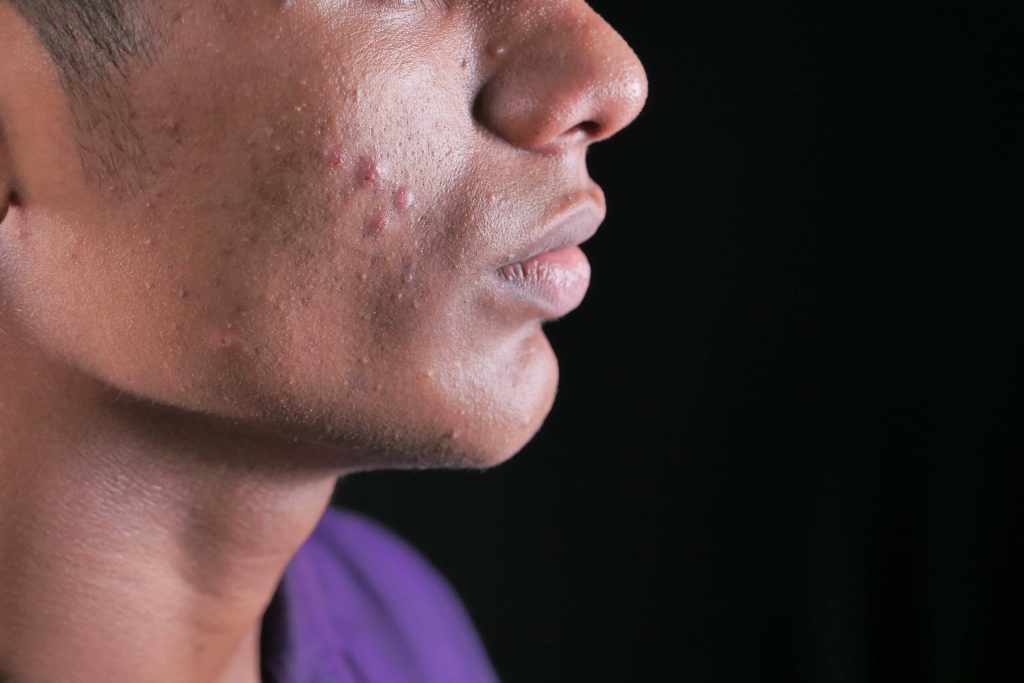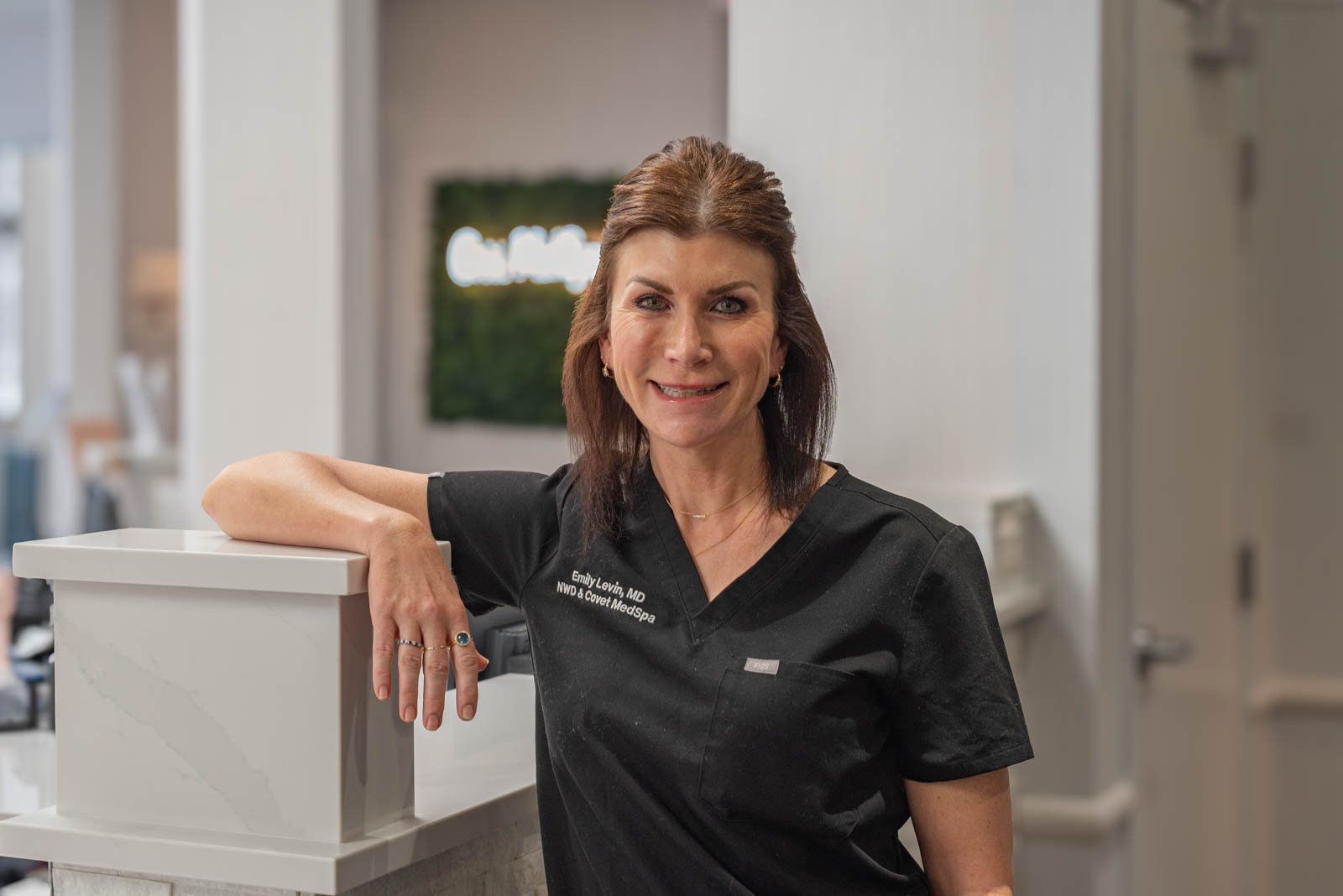Think KISS When Dealing with Acne-Prone Skin
Acne is the most common skin condition in the country, affecting 50 million Americans each year. Although acne generally begins in puberty – at some point between the ages of 12 and 24 approximately 85% of us experience at least minor outbreaks – it can occur at any age. Not surprisingly, acne is big business. In the attempt to keep our skin clean and clear, we spend $9 billion annually for soaps, scrubs, creams, concealers, exfoliants, foams, gels, lotions, moisturizers, peels, rubs, sponges, and a whole host of miracle cures. The problem: some of these actually do more harm than good.
Let’s see what works best and why. (Hint: it may be simpler and less costly than you think.)
Why Acne Happens
As an inflammatory condition of the skin, acne occurs when hair follicles become plugged with sebum, dead skin cells, bacteria, and other debris. Sebum is an oily, waxy substance secreted by your body’s sebaceous glands; this necessary component of healthy skin coats, moisturizes, and protects. Sebum production begins in the womb, declines six months after birth, then jumps a whopping 500% with the onset of puberty. Hormonal changes result in enlarged glands, excess oil output, clogged hair follicles, and acne-infected skin so common among teenagers. Since sebaceous glands are concentrated on the face and upper body, that’s where acne (much to the dismay of image-conscious young people) is most likely to occur.
Dividing acne into two categories, noninflammatory and inflammatory, can help in understanding it. Noninflammatory refers to blackheads and whiteheads (the medical term is comedo). The former are clogged pores that remain open, with the open surface turning dark. The latter remains closed with debris trapped under the skin, causing the pore to swell. Anything with a red, robust appearance is Inflammatory acne. This can range from papules, which are small red bumps, to pustules that contain pus, to larger, more painful nodules and cysts deeper in the skin.
Researchers don’t fully understand why some people largely escape acne or display only mild, sporadic outbreaks, while others experience persistent severe symptoms. Family history likely plays a role, as does an overabundance of hormones and related production of sebum. Diet, hygiene, and stress may also be involved.
Fortunately, most acne can be controlled with careful skincare using over-the-counter products. That’s where KISS comes in.

The KEEP IT SIMPLE SOLUTION Works Best
Dermatologists agree that taking prompt action helps keep mild acne from becoming serious, leading to faster improvement and minimal scarring. Heading off emotional distress is also important, especially during the sensitive teenage years.
Adopting a consistent, KISS-focused skin care routine is key.
Wash The Face
Wash the face and other affected areas twice a day, in the morning and before going to bed. Using your fingers in a circular motion, apply a mild soap or acne-specific cleanser, rinse with lukewarm water, and pat dry with a clean towel. To avoid irritating or drying out already damaged skin, do not use a washcloth or sponge, do not rub or scrub, and stick to morning-and-evening only cleansing. The one exception is after sweating from work or exercise; follow the same regime to remove debris.
Products
Only use products designed to target the causes of acne. These include salicylic acid to open pores and ease inflammation, benzoyl peroxide to decrease bacteria, and retinoids to reduce oiliness. Plenty of choices and brands are available at stores and online. Be sure to carefully read labels so you know what merchandise contains. Select items that say non-comedogenic, non-acnegenic, or oil-free. Stay away from creams, cocoa and shea butter, oils, fragrances, astringents, exfoliants, and anything with alcohol; such substances lock in bad stuff and damage tender skin. To keep breakouts from spreading, be sure to use a product on all acne-prone areas, not just on active blemishes. If something causes redness, dryness, or flaking, switch to something else.
Stick With a Treatment
Stick with a treatment protocol for at least four weeks, and six is better. Acne control is not a quick fix, despite claims to the contrary; frequent switching of products can cause new breakouts by stressing the skin. If acne doesn’t improve after a month, adding a second product or trying a different one might help. Expect complete healing to take three to four months or more. Consistent treatment is also important; skipping cleansing for even a day or two can make things worse.
Resist
Resist touching, picking, popping, rubbing, squeezing, and otherwise attempting to remove blemishes; that spreads dirt, bacteria, and oil, and can lead to scarring. Keep hair off the face and wash it frequently to limit the spread of irritants.
Hydrate
Keep skin hydrated by drinking plenty of water, using sunscreen and following smart sun procedures, and staying out of tanning beds. A mild moisturizer can help, but be sure to read the labels so you know what it contains. Wearing makeup is okay as long as it’s water-based and oil-free. Don’t share products, applicators, or brushes – that spreads contaminants. Remove makeup at bedtime so the skin can breathe.
You don’t have to spend big bucks, although quality products do matter. Choose carefully to find what works for you.
What To Do When More Is Needed
For acne with extensive involvement, deep, painful pustules, or outbreaks that persist or recur, seeking professional help is a smart move. A dermatologist or other medical professional can diagnose exact causes, design a treatment regime, and prescribe stronger medications than over-the-counter varieties. Trust only a doctor to safely use invasive treatments like chemical peels, microdermabrasion, or laser therapy. Since other skin conditions can mimic acne, a dermatologist can determine what’s really going on and treat it appropriately. Emotional distress is a very real concern for many acne sufferers; the doctor can help with that, too.
For people with skin of color, acne may be accompanied by dark spots called hyperpigmentation. These can last longer than acne and require additions to the KISS approach. Using benzoyl peroxide and the retinoid in combination may be needed to remove bacteria, open pores, and reduce inflammation. Remove blemish-causing agents by switching hair care from oil to water- or glycerin-based products and using mineral rather than oily, heavy makeup. Cocoa butter can be another culprit. Despite advertising claims, there’s no scientific evidence that it evens out skin tone, but it can cause acne by closing up pores.
For everyone, remembering that successful treatment of acne takes time is essential. Be kind to your skin and stick to KISS – you will see results.



